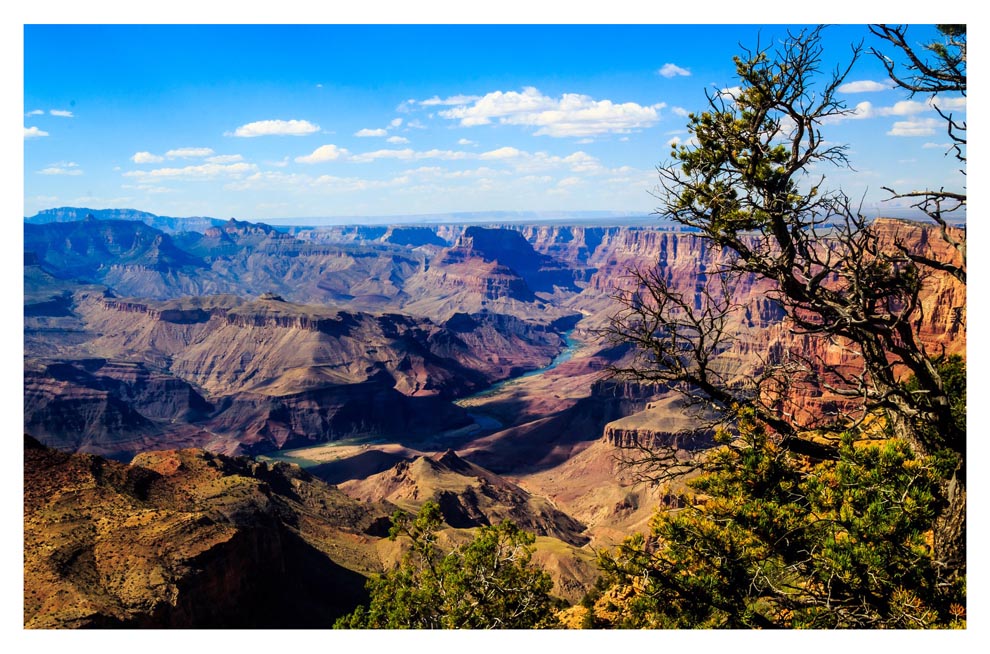

“There goes God with an army of banners.” —Poet Carl Sandburg comparing the Canyon to a Divinity.
The Grand Canyon in Arizona is 277 miles long, a mile deep and as much as 18 miles wide. All of it has been carved out by erosion of the Colorado River.
The first white men to see the Grand Canyon were Spanish soldiers, fortune hunters, who reached the land in 1540. The tawny, copper-like Indians had built pueblos, made of clay. “After they had gone 20 days,” Coronado’s scribe had written that they “came to the banks of the river which seemed to be more than three or four leagues across to the other bank.”
Indians were afraid of the River. The Navajo had a legend of an ancient flood. In the general inundation their ancestors had escaped drowning by turning themselves into fish. To this day a religious Navajo will not eat fish, lest he be downing a relative.
The Indians and many white men believed that there were high waterfalls between the perpendicular walls of the inner gorge of the Canyon. Belief was that they would be swept over the falls to their deaths.
It has precipices, buttes, slopes, spires, drops and air. The rock in its depths has been waiting there for two billion years. Approximately three million visitors come yearly.
Trees stand tall over this majestic sight. The Gambel oak with its leaf and bark resembles its close cousin the Oregon white oak. Ponderosa pines have bark that smells like vanilla and their pale yellow wood is soft, but, strong.
Pinon pines and junipers grow alongside one another. There are four species of mistletoe to be seen on the Canyon’s rim. The discovery of the Grand Canyon left visitors to say how beautiful it was and write of its majestic qualities. Not a solitary sound emerges from those depths. During the day there is a faint haze in the Canyon and the quietness becomes almost visible. Visitors sit against a tree and watch for hours while the Canyon changes colors in the bright sunlight.
The light in the Canyon penetrates the earth to a depth of a mile and reveals 20 stratas of rock of red shale, yellow-grey limestone, white and brown sandstones, pink granite, and almost black schists. There are the pink and gold and blue colors of sunrise. At night, lights filter across those silent spaces. The sparrows and juncos travel from rim to rim in installments. Birds take short flights down one side, cross the River and fly up the opposite side.
My brother, Ray, and I enjoyed the Grand Canyon eight years ago, but….I did not take photographs! Had left my camera at his house! So, the cactus in bloom, the slender elegance of the Aspens, the yucca, the tall Douglas fir, the elusive cougars, or the walls of stone remain only in memory. It was in the shadow of the 100-foot ponderosa pines, we had walked. Within those red walls, we saw innumerable little worlds and many hidden paradises.

